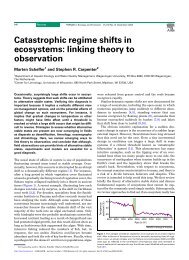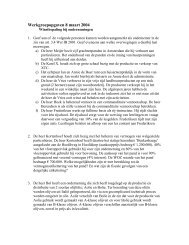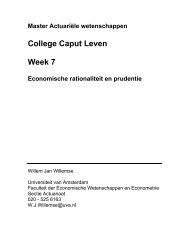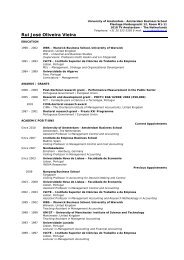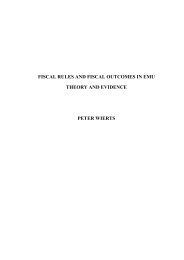How Do Corporate Venture Capitalists Create Value for ...
How Do Corporate Venture Capitalists Create Value for ...
How Do Corporate Venture Capitalists Create Value for ...
You also want an ePaper? Increase the reach of your titles
YUMPU automatically turns print PDFs into web optimized ePapers that Google loves.
IPO market, CVCs are able to attract greater participation by more reputable market players indicates a<br />
signaling role of CVC backing in IPOs: i.e., backing by CVCs with superior industry knowledge seems to<br />
effectively communicate to various other market players that the IPO firms backed by them are high<br />
quality firms with good future prospects.<br />
8. Valuation of CVC Backed and IVC Backed Firms at IPO<br />
In this section we study stock valuation of CVC backed and IVC backed IPOs. In an IPO market<br />
characterized by significant asymmetric in<strong>for</strong>mation between firms issuing equity and outside investors,<br />
the ability of financial intermediaries such as venture capitalists to credibly communicate in<strong>for</strong>mation<br />
about the true values of firms backed by them becomes very important. The analysis of the valuations of<br />
CVC and IVC backed IPO firms allows us to compare the ability of these two kinds of venture capitalists<br />
to reduce the degree of asymmetric in<strong>for</strong>mation in the IPO market. One would expect firms backed by the<br />
intermediary with a greater ability to communicate their private in<strong>for</strong>mation about the future prospects of<br />
the firm going public to equity market investors to be awarded higher valuations.<br />
8.1 Methodologies Used to Compute Intrinsic Firm <strong>Value</strong><br />
The first approach we use to estimate the intrinsic value of IPO companies is a matching technique<br />
based on an industry peer with comparable Sales and EBITDA profit margin (EBITDA/Sales) similar to<br />
that used by Purnanandam and Swaminathan (2005). Here we limit our consideration to the subset of IPO<br />
(and matching public firms) that have positive EBITDA and Sales. We first consider all firms in<br />
Compustat that were active and present on CRSP <strong>for</strong> at least three years at the end of the fiscal year<br />
preceding the IPO. We then eliminate firms that are REITs, closed-end funds, ADRs, not ordinary<br />
common shares, and firms with stock prices less than $5 at the report date. We separate the remaining<br />
population of Compustat firms into 48 industry groups based on the industry classification introduced by<br />
27




